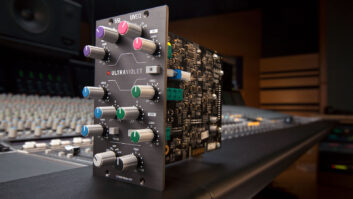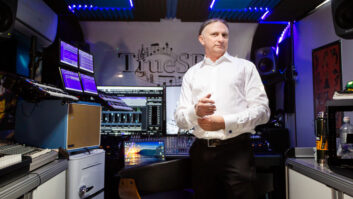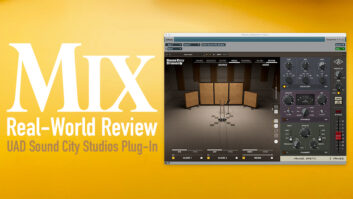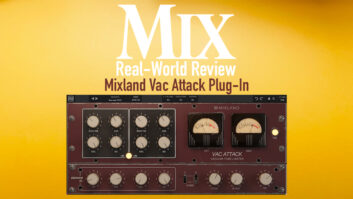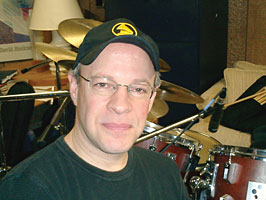
Among the many technological and marketplace challenges to our familiar world of pro audio, the one that shakes up even the very best mixers is when they hear that their current project does not require a stereo mix. No stereo. At all.
Blame surround sound if you like, but the members of the Producers & Engineers Wing, the readers of Mix and the manufacturers that advertise here have supported surround for years. Little did we know it was going to cut into the primacy of good ol’ stereo.
Surround soundtracks have multiplied exponentially in recent years. Millions of homes around the world have 5.1 home theaters, and countless millions of videogames support surround audio during play. Feature films are exhibited in surround, and their DVDs default to it. The public has voted. Play them surround, and they like it.
Of course, there are still plenty of release and exhibition formats that prioritize stereo, such as CDs, downloadable tracks and almost all radio, including terrestrial, satellite and Internet. But if audio is synched to a picture, stereo is getting harder to find. And the biggest purveyor of surround audio is right there in your home already — television. The top primetime shows do not even broadcast stereo as we know it. Yes, the mixers for primetime hits like CSI, West Wing (gonna miss that one), and Law & Order; entertainment specials like the Super Bowl, the Oscars and the Grammy telecast; and sports from ESPN are still delivering two soundtracks. One of them is 5.1 discrete surround. But the other one is LtRt (left-total, right-total). No more Left-Right. In most cases, the HD delivery specs don’t call for stereo, and there isn’t even any room for it on most HD video masters (or the live transport stream).
So when Tony Soprano is slapping Christopher upside the head on HBO, or when Bono is thanking the audience for another Grammy, there are two soundtracks: 5.1 on the HD broadcast, and LtRt (not stereo) on the SD broadcast. And to complicate it further, that SD soundtrack needs to work two different ways.
Unlike the discrete 5.1, the LtRt matrix mix is monitored in two different fashions: (1) encoded, through two speakers; or (2) decoded, by something like Pro Logic or Circle Surround in a home receiver, and monitored through a 5.1 home theater.
The LtRt is typically a downmix derived from a discrete 5.1 surround mix. Who creates — and when and where they create — this LtRt matrix mix is really the crux of the issue. Because the majority of the audience still watches the SD broadcast, the LtRt matrix mix deserves our serious attention.
Previously, at least in a music session, a stereo mix and a 5.1 mix would have been balanced independently. In sound for picture, the signal paths and workflows in practice today combine the two. Sometimes hardware encoders and sometimes software encoders are used to allow the mixers and producers to adjust the parameters that determine the fold-down from the 5.1, such as the amount of center channel and rear channels included. When a matrix LtRt is anticipated, the placement of elements in the discrete 5.1. source mix need take the LtRt into account. As always, the careful attention of dedicated audio mixers and producers can deliver stellar results.
And that’s the rub. With new HD video formats emerging nearly every NAB show, and networks rebuilding their entire infrastructures from end to end, some broadcasters and cablecasters are beginning to think that if they receive the discrete tracks of a 5.1 mix, they can automate the LtRt matrix downmix. Does that sound like a good idea to you? Do you let the replicator balance your rhythm section?
And I haven’t even mentioned transporting your audio in Dolby E, getting the correct metadata to stick with it (hello dialnorm), the perils of the Dynamic Range Control in the set-top box, etc.
There are lots of gotchas in this whole 5.1-to-LtRt thing. It takes skillful, artful audio professionals doing their best to get these soundtracks from the mix suite to the home as they were intended. And it always will.
If all this is giving you a headache, you are not alone. But if you’d like to lay back, and just experience what surround sound was always meant to be, don’t miss the 2006 Best Surround Grammy winner: Dire Straits’ Brothers in Arms, remixed by Chuck Ainlay. Ah, the good ol’ days.
Grammy Award–winning producer Hank Neuberger is known for providing multi-platform production solutions for recording artists, music festivals and television productions. His company, Third Wave Productions, numbers among its recent high-definition credits projects for the Dave Matthews Band, the Black Eyed Peas and the John Mayer Trio. Recent Webcast productions include Bonnaroo, Lollapalooza and the Austin City Limits Festival. As a supervisor of broadcast audio for the annual Grammy Awards telecast, Neuberger was instrumental in the telecast’s receipt of the Emmy Award for “Outstanding Sound Mixing” for the 2003 show, which aired in 5.1 over the CBS network. He serves as executive VP of two world-class audio facilities: Chicago Recording Company and Glenwood Place Studios in Burbank, Calif.; and is a past chairman of both the Board of Trustees of the Recording Academy, and the Board of Directors of the MusiCares Foundation.
